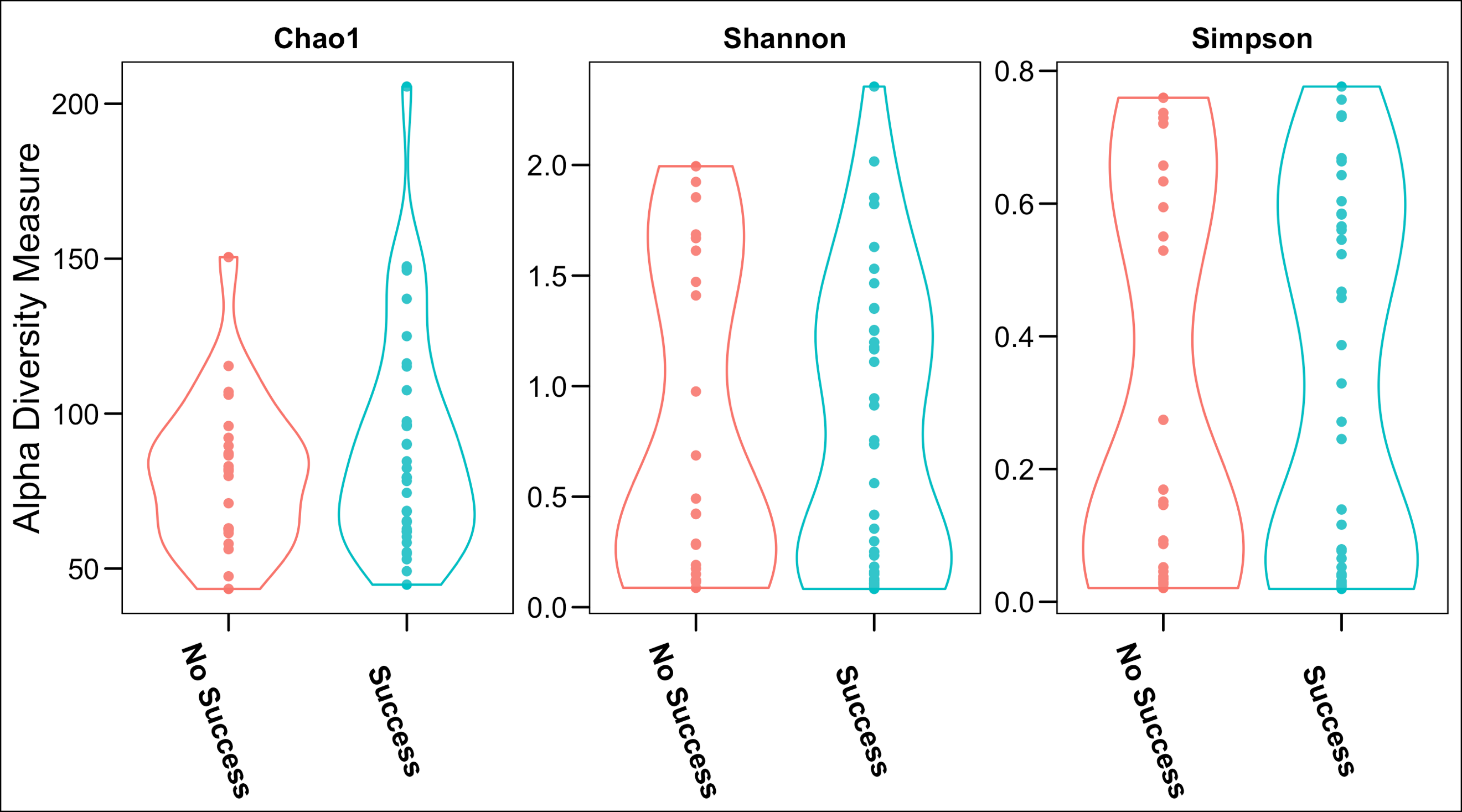Title:
Are cervicovaginal microbiome differences associated with cerclage success in high-risk women with cervical shortening?
Authors:
Akila Subramaniam, MD, MPH, Boyi Guo, MS, Elena Lobashevsky, MD, PhD, William van der Pol, MS, Elliot Lefkowitz, PhD, Casey Morrow, PhD, Jeff M Szychowski, PhD, Nengjun Yi, PhD, John Owen, MD, MSPH.
Background:
- Cervical length (CL) shortening is a powerful predictor of and precursor to spontaneous PTB (SPTB)
- Cervical cerclage placement shown to reduce the risk of SPTB in high-risk women (prior SPTB) with a shortened CL
Objective:
- To compare the cervicovaginal (CV) microbiome in high-risk women with midtrimester CL shortening who experience successful versus unsuccessful cerclage placement.
Study Design:
- We performed a nested case-control study using stored CV biospecimens from a multicenter randomized trial of cerclage for midtrimester CL shortening <25mm in women with a prior SPTB
- Cerclage success was defined as
- 1) birth gestational age (GA) [study pregnancy] >37 wks
- 2) birth GA 1 week > most recent previous birth
- 3) birth GA 5 weeks > most recent previous birth.
- Alternative definitions of success included birth GA > qualifying PTB or >earliest birth GA. Samples collected at time of CL shortening diagnosis in women who received cerclage were used.
- For this study, samples collected (and stored at -80C) at the time of CL shortening diagnosis for women randomized to cervical cerclage were included.
- DNA was extracted and a V4 amplicon library prepared and sequenced on the MiSeq platform.
- The QIIME package, using DADA2, generated Amplicon Sequence Variants with a high yield of species-level identifications.
- Microbiome composition and group comparisons (success vs no success) were assessed on the community level (through alph and beta diversity) as well as on the taxa-level through relative taxon abundance.
- Negative binomial models, adjusting for covariates (maternal age, race, BMI, and IM progesterone use), were used in taxa-specific analysis
- False discovery rate was used to adjust for inflated type I error.
Results:
- Samples from 57 participants who received a cerclage were analyzed.
- There was no significant difference at the community level (alpha or beta diversity) measures by any of our definitions of cerclage success (Figure).
- Overall microbial composition was most distinct (not significant) with cerclage success defined as birth GA >37 wks (PERMANOVA p=0.09).
- Taxa-level analysis demonstrated that in women with cerclage success (birth GA >37 wks), there was
- Greater abundance of Lactobacillus (FDR p=0.003)
- Less Prevotella (p=0.004). There were no other significant taxa by other definitions of cerclage success.
- There were no other significant taxa by other definitions of cerclage success.
Conclusions:
- After an ultrasound-indicated cerclage
- Lactobacillus is associated with term delivery
- Prevotella with recurrent PTB
- Trials to evaluate if altering the CV microbiome toward Lactobacillus improves outcomes after cerclage are warranted.
Figure. Comparison of alpha diversity between women with cerclage success and no success when success defined as birth GA > 37 weeks